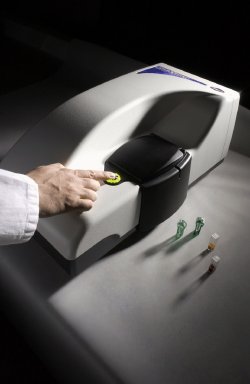Sandra Whaley Bishnoi, Assistant Professor of Chemistry at the Illinois Institute of Technology, has selected the Zetasizer Nano ZS from Malvern Panalytical to meet the specific particle sizing and zeta potential measurement needs of her research team. Dr Whaley Bishnoi and her team specialise in tunable nanoparticle sensors that look at local pH on an intercellular level. They use the Zetasizer Nano to measure the hydrodynamic diameter and zeta potential of these plasmonic nanoparticles.

As experts in surface chemistry they rely on being able to collect robust measurements of critical parameters quickly and easily. By freeing the user from requiring specialist knowledge of the dynamic light scattering measurement technique itself, the Zetasizer Nano enables the Illinois team to continue breaking ground in research that may ultimately facilitate fast screening and early diagnosis of breast cancer.
“Particle size and surface charge are critical to the tunability of the plasmonic nanoshells we work with,” explains Dr Whaley Bishnoi. “We want to create tools that function at the bionanotechnology interface. By tailoring the surface chemistry of gold-silica nanoparticles with a pH sensitive molecule and a targeting molecule, we can deliver functionalised nanoshells that will selectively bind with human cancer cells. These can then be tracked in vitro using surface enhanced Raman scattering (SERS).”
“Unlike other instruments that just sit on people’s shelves and don’t get used, Malvern Panalytical’s Zetasizer Nano is so useable that colleagues come from other universities to make measurements with it.”
“A laboratory instrument should be a tool to understand the science you want to do, it should not be about understanding the measuring technique. We do not want to produce DLS experts; we want to carry out measurements relevant to our speciality – surface chemistry,” said Dr Whaley Bishnoi. “Whenever I have a question about light scattering or zeta potential testing Malvern Panalytical always has the answer and the information is highly accessible. From a customer service point of view Malvern Panalytical goes way beyond other companies.”
In her latest publication; “Rapid Raman imaging of stable, functionalized nanoshells in mammalian cell cultures”, Nanoletters, Vol. 9, No. 8, authored jointly with Ms Y Huang and Mr V Swarup, Dr Whaley Bishnoi describes a complete strategy for tracking the uptake of plasmonic nanoparticles.